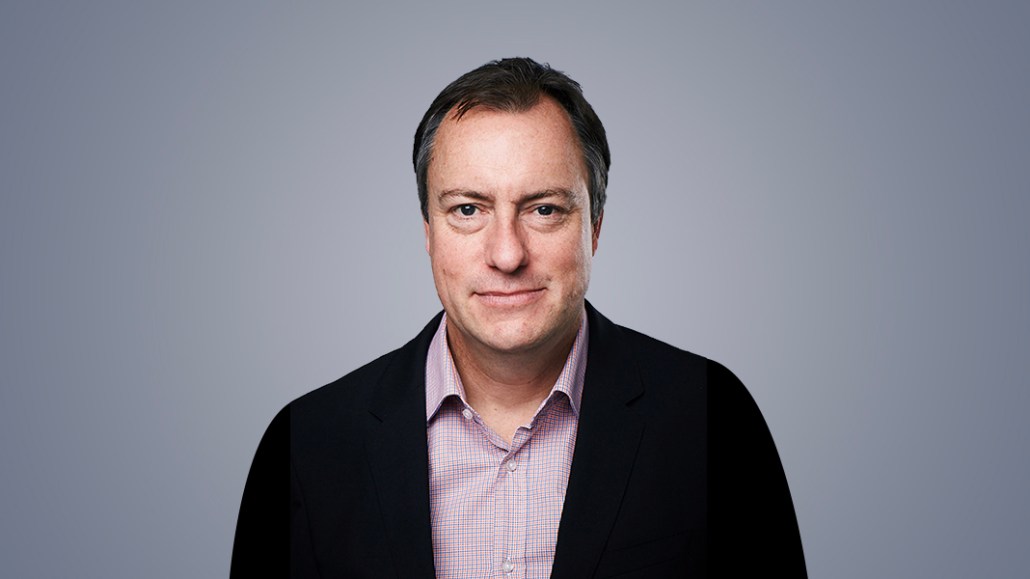Register by Jan 13 to save on passes and connect with marketers from Uber, Bose and more
Hearst Magazines UK CEO James Wildman: ‘The media world is turning into a messy place’

Hearst Magazines U.K. CEO James Wildman, who took up the post this April from Trinity Mirror, has a familiar mandate for magazine publisher: drive digital revenue growth to offset losses in print and find new revenue streams.
“The midterm objective is to reach the inflection point quickly. Our growth in new revenue will have to more than offset the decline in old revenue,” he said. “Next year will be top-line revenue growth year-on-year.”
Hearst U.K. is home to brands like Harpers Bazaar and Good Housekeeping. The publisher halved its annual losses to £2.7 million ($3.6 million) in its last financial year, but it still relies on print for 70 percent of its revenue.
Since Wildman took up the post, he’s set up quarterly meetings with Hearst U.K.’s 1,000 employees and reorganized teams. Digiday spoke to Wildman to discuss its growing product licensing and events businesses and the shifting power of platforms. The conversation has been slightly edited for clarity.
What changes have you made since you arrived?
When I arrived, nothing was broken. We had all the raw materials — strong brands and great journalists — but it felt like a bowl of spaghetti: It wasn’t particularly structured. It felt like 22 businesses under one roof, rather than 22 brands within one business. The opportunity now is around collaboration without losing the focus of the individual brands.
How are you doing that?
On the editorial side, we’re taking a “hubbing” approach. Our three main lifestyle brands [Good Housekeeping, Prima and Red] and our three main home brands [House Beautiful, Country Living and Elle Decoration] are now bigger editorial groups. It’s still important to cherish the individual brands but we’re encouraging more cross-brand working, so an article will be written that could appear on any three but iterated for it. It’s not necessarily more efficient but definitely more collaborative.
What about on the commercial side?
We used to have brand-by-brand sales teams. We’ve pivoted toward an agency-sales model, our agency-facing sales group has specialists in print, digital, creative solutions and planners. That’s meant hiring a full-time sales trainer to repurpose our staff. Agencies are finding us easier to navigate — that was a criticism — therefore we’re easier to do business with. Agencies didn’t want to talk to 20 different people from Hearst. They want one more valuable conversation about the strength and breadth of the organization, not just through advertising.
What else does that entail?
Our product licensing business is relatively unknown, [sofa retailer] DFS will sell £50 million ($66.7 million) worth of Country Living sofas this year. Argos’ best-selling home gym is Men’s Health equipment. There is a House Beautiful Carpet Right range selling like hotcakes. You can buy Men’s Health beef jerky in any supermarket. That demonstrates the power and trust of those brands. There’s so much we can and will do. We’re also investing in events. In the last year, revenue from events has doubled. We run roughly two events a week, like the Esquire Town House or the Harpers Bazaar Women of the Year Awards.
Are you making revenue from the platforms?
Third-party platforms will become increasingly important in our future. We have a symbiotic relationship with platforms, like Snapchat. It’s good for them to have Cosmo on Snapchat Discover, and we get a revenue share. You could argue the balance of power is with them because of their extraordinary scale, but they don’t have the content.
Do advertisers care?
Advertisers have to understand the decision to put money into a platform which doesn’t employ a single content creator, and in so doing put some quality publishing businesses under pressure. We’re seeing the word trust used in briefs more and more, that’s interesting. The media world is turning into a messy place. Trust is as low as it’s ever been. In an increasingly fragmented world, our brands are rubies in the dust.
What would you like to change about the industry?
Advertisers should take more interest and critique the channel choices their agencies are making. The average marketer probably spends 10 percent of their time thinking about the media. The walled gardens trade on their own metrics — that alone is extraordinary. But I’m confident logic will out. We have to be more on the front foot about what we can offer.
Image: courtesy of Hearst Magazines UK.
More in Media

Media Briefing: Here’s what media execs are prioritizing in 2026
Media executives enter 2026 weathered by disruption, but refocused on AI revenue, brand strength and video and creator opportunities.

Why publishers are building their own creator networks
Publishers are forming creator networks to regain control, combat traffic declines, and reach audiences shifting toward influencers.

The accidental guardian: How Cloudflare’s Matthew Prince became publishing’s unexpected defender
Cloudflare’s day job is fending off botnets and nation-state cyberattacks, not debating how Google and other AI firms crawl publisher sites.








